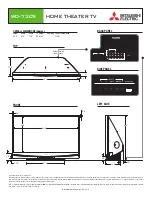
45
Raychem-IM-H58033-XLTracePipeFreezeProtectionCOM-EN 18/01
7
Test Procedures
Conductance method
The conductance method uses the core resistance
of the heating cable to approximate the location of
a fault when the heating cable has been severed
and the bus wires have not been shorted together.
A severed heating cable may result in a cold section
of pipe and may not trip the circuit breaker. Measure
the bus-to-bus heating cable resistance at each end
(measurement A and measurement B) of the suspect
section. Since self-regulating heating cables are a
parallel resistance, the ratio calculations must be
made using the conductance of the heating cable.
A
B
A
B
A
B
Braid
Figure 31: heating cable resistance measurement
The approximate location of the fault, expressed as a
percentage of the heating cable length from the front
end, is:
Fault location: D =
1/A
x 100
________
(1/A + 1/B)
example:
A = 100 ohms
B = 25 ohms
Fault location: D = (1/100) / (1/100 + 1/25) x 100
= 20%
The fault is located 20% from the front end of the
circuit.
Capacitance method
This method uses capacitance measurement (nF) as
described on Figure 26, to approximate the location
of a fault where the heating cable has been severed
or a connection kit has not been connected.
Record the capacitance reading from one end of the
heating cable. The capacitance reading should be
measured between both bus wires twisted together














































